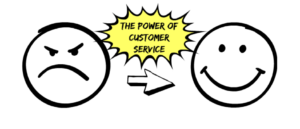Customer journey. Customer experience. Customer expectation.Customer delight. Customer service. All old wine in new bottles but as should have naturally been the case, things have not matured with age. On the contrary, getting genuine attention(just like paying attention) in an attention starved economy is becoming increasingly difficult and going from bad to worse.
As ordinary mortals, often times we have to deal with banks, financial services, utility companies, car rental brands etc. And we reluctantly take a call on making a call to the epicentre of under delivery– the omni present but care absent ‘ call centre ‘.
Technology has made rapid strides and from a security perspective ‘ voice recognition ‘ is the harbinger of hope( or so we hoped) for customers expecting to avoid the seven and a half minute hold listening to tastelessly chosen recorded music. And you thought your voice will be heard– tough luck- once you are past that process, you go back in time(yes, literally) and field the 5 security questions to ensure that you are who you are and you are not from a different mother as originally envisaged. And you are left wondering why was the voice recognition used in the first place if the process was to lead to further questioning and endless hold. A lot of questions and certainly no convincing answers.
Pardon my sequencing here- I overlooked to mention the two biggest lies floating around that brands have been propagating blatantly, namely:-
– Your call is important to us and will be attended to shortly
– This call maybe recorded for quality and assurance purposes
I say these are the biggest lies for a couple of reasons:
– When was the last time you actually found a call centre personnel sufficiently empowered to resolve your problem? Even if your imagination runs riot, you will be chasing a mirage only.
– On multiple occasions we have put forth our suggestions, frustrations etc on these ‘ recorded for quality & assurance purposes ‘ calls and the customer experience slide has only degenerated further south. Maybe it was ‘ just for the record ‘.
– Have you ever received from a ‘ Relationship Manager ‘ of your bank based in a distant call centre(who is clueless about where you are based) on a Friday afternoon when you have just settled into your afternoon weekend siesta? I have, many times over. This after copious amount of information has been shared to them in the KYC(Know Your Customer!). It should be more like NO, YOU DON’T KNOW YOUR CUSTOMER!
– Have you received calls from an over enthusiastic telecom provider calling you three times in a day(atleast) to ask you for payment(which falls due two weeks hence)? I have. It leaves you wondering ‘ Do(I let phonetics play its part here in let you deciphering who) they have to do that? ‘
Of course there are exceptions and we have heard about the experiences that the likes of Zappos etc provide to their customers that is now part of folklore. But all that seem to be happening on a different planet.
A caveat here before you may misinterpret my vitriol: I don’t belong to that tribe who echoes the sentiment ‘ The customer is always right ‘- its certainly not the case.
The sanctum mantra that brand owners, marketing heads and guardians have been acting on endlessly has been ‘ call to action ‘. But, when the shoe is on the other foot, it seems more like a ‘ call to inaction ‘. And you just can’t seem to shoe that away!
ENDS
www.brandknewmag.com
www.groupisd.com/story
Image:userlike.com


